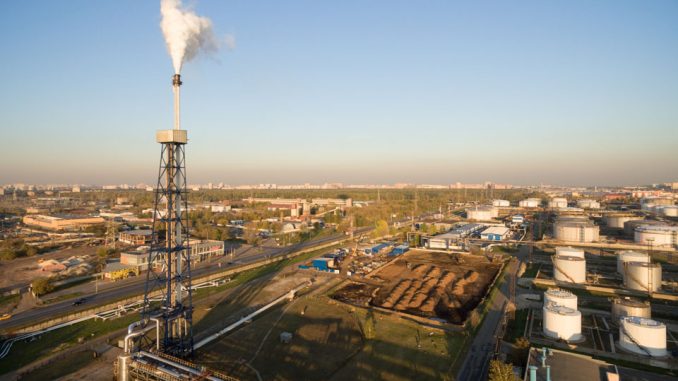
Oil and gas represent some of the world’s greatest sectors in terms of monetary value. The oil and gas industry is basic to the global economy since it discovers, extracts, refines, and transports one of the world’s primary fuel supplies.
However, producing and selling petroleum products is complicated and expensive. Several studies have found that oil and gas companies work in hazardous environments. They must discover methods to keep prices under control, reduce carbon emissions, obtain reliable human resources, and remain employees safe.
Today’s gas and oil companies utilize cutting-edge technology, such as additive Manufacturing or 3D printing, to address issues and reduce risks. Approximately 83% of gas and oil companies can use 3D printing for Manufacturing as a Service (MaaS).
Furthermore, several market forecasts predict demand for 3D printing in the oil and gas industry will increase shortly. We can watch how additive industry technology will affect the oil and gas industry established on these 3D printing requests.
Accelerating product development
Because the energy industry is so volatile, oil and gas companies must experiment with new ideas. They aim to minimize risks by thoroughly analyzing fresh ideas. Rapid development, rendered possible by 3D printing, allows these enterprises to test their ideas more easily.
Engineers may utilize 3D printers to visualize, produce, and test their ideas without investing additional time or money. They may produce more than one form of the sample and upgrade present components by modifying digital 3D models. Similarly, they can produce components with complex forms and great efficiency.
Assisting with on-demand Manufacturing
One of the most usual applications of 3D printing in the oil and gas sectors is low-volume or on-demand production. To save money and time on equipment, companies in the energy business have shifted from subtractive production to 3D printing.
They put up 3D printing centers in several locations so that they may create tools or components as required. Furthermore, many businesses rely on reputable 3D printing companies to create parts such as valves, pumps, gas turbine blades, as well as turbo-machinery near specific locations.
High-Value Parts Repair
Unexpected downtime is often triggered by the need to repair or maintain high-value components. Engineers cannot utilize the tools until damaged pieces are repaired or replaced. With 3D printing, oil and gas businesses can repair components quickly and from a distance.
Using digital data, an expert could employ a 3D printer to create damaged or additional components. He can produce the component in a few hours at a location remote from the work site if he can access a 3D printer. Experts can also maintain the machines by replacing worn-out components with 3D-printed ones.
Facilitating supply chain management
Most oil and gas industries operate using global supply networks. They must collaborate with domestic and international enterprises to guarantee that parts and spares may be sent to various locations. 3D printing assists energy firms in changing their intricate supply chains by making it simpler to create components on demand and in small numbers.
Energy businesses are already replacing physical inventory with digital inventory. They do this by strategically placing 3D printers. Engineers may use 3D printers to create additional components directly where required. As a result, businesses no longer need to store large inventories or rely on worldwide supply networks.
How to Reduce the Expensive Cost of Downtime
Unexpected downtime costs an oil and gas business $5.37 million per year. Every year, unplanned downtime prices the oil and gas sector millions of dollars in lost income. Oil and gas industries cannot avoid unplanned downtimes unless they reduce the time required to get spare components. Engineers may utilize digital 3D models to create additional components on 3D printers.
When they require extra parts in a hurry, they can use a 3D printer to create them. They may also speed up the production of additional components by using the 3D printing capabilities of local businesses. As a result, oil and gas companies 3D-print spare components to minimize unanticipated downtime.
Developing new policies
According to many, one of the main reasons why 3D printing isn’t employed more in the oil and gas business is a lack of standardization and licensing. However, DNV, the world’s largest classification society, devised a solution: DNV-ST-B203, a new technical standard.
The additive manufacturing standard for metal components governs how 3D-printed products must be approved in industries such as oil and gas. Oil and gas companies may use the specifications to make their 3D-printed assets and items safer and more useful. Oil and gas companies will find it simple to adopt 3D printing technology because it’s the technical standard.
Reduced carbon emissions
Oil and gas industries account for 33% of global direct and secondary carbon emissions. Many oil and gas companies can reduce carbon pollution by shifting from subtractive to additive Manufacturing. An oil and gas firm that employs 3D printing rather than subtractive Manufacturing may reduce carbon emissions by 45%.
Oil and gas companies use polymer and metal 3D printing to lower carbon footprints. They do this by reducing the need to send more components, producing less waste, and recycling 3D printing resources. They will resume supporting 3D printing to lower carbon emissions seriously.
Conclusion
Because of 3D printing, the oil and gas industry has already begun to shift. Oil and gas companies have invested in 3D printing techniques and materials to increase productivity, reduce costs, speed production, and streamline supply chains. Furthermore, many companies have begun to produce 3D printers for use by oil and gas companies.
However, many experts believe that oil and gas companies cannot reap the benefits of 3D printing unless they change their manufacturing processes. Simultaneously, they must keep the production process stable and repeatable so that they can 3D print parts that meet stringent quality standards.






Leave a Reply